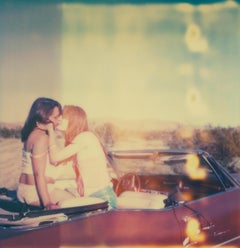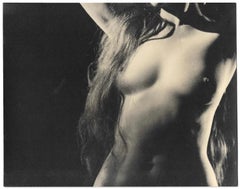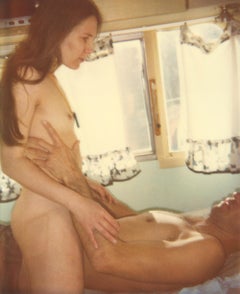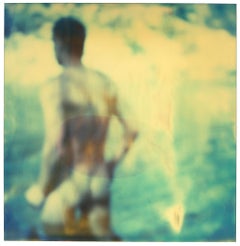Early 2000s Nude Photography
Contemporary Early 2000s Nude Photography
Archival Paper, Photographic Paper, C Print, Color, Polaroid
Photorealist Early 2000s Nude Photography
Ink, Printer's Ink, Photographic Paper
Contemporary Early 2000s Nude Photography
Archival Paper, Photographic Paper, C Print, Color, Polaroid
Contemporary Early 2000s Nude Photography
Archival Paper, Photographic Paper, C Print, Color, Polaroid
Contemporary Early 2000s Nude Photography
Photographic Paper, Archival Paper, C Print, Color, Polaroid
Contemporary Early 2000s Nude Photography
Archival Paper, Photographic Paper, C Print, Color, Polaroid
Contemporary Early 2000s Nude Photography
Wood, Archival Paper, Photographic Paper, C Print, Color, Polaroid
Contemporary Early 2000s Nude Photography
Archival Paper, Photographic Paper, C Print, Color, Polaroid
Contemporary Early 2000s Nude Photography
Photographic Paper, C Print, Color, Polaroid
Contemporary Early 2000s Nude Photography
Archival Paper, Photographic Paper, Black and White, Giclée, Pigment, Ar...
Early 2000s Nude Photography
Digital Pigment
Contemporary Early 2000s Nude Photography
Archival Paper, Photographic Paper, C Print, Color, Polaroid
Contemporary Early 2000s Nude Photography
Archival Paper, Photographic Paper, C Print, Color, Polaroid
Contemporary Early 2000s Nude Photography
Photographic Paper, Archival Paper, C Print, Color, Polaroid
Contemporary Early 2000s Nude Photography
Archival Paper, Photographic Paper, C Print, Color, Polaroid
Contemporary Early 2000s Nude Photography
C Print, Color, Polaroid, Archival Paper, Photographic Paper
Early 2000s Nude Photography
Digital Pigment
Contemporary Early 2000s Nude Photography
Photographic Paper, C Print, Color, Polaroid
Contemporary Early 2000s Nude Photography
C Print, Photographic Paper, Color, Polaroid
Contemporary Early 2000s Nude Photography
Color, C Print, Polaroid
Contemporary Early 2000s Nude Photography
Archival Paper, Photographic Paper, C Print, Color, Polaroid
Contemporary Early 2000s Nude Photography
Digital
Contemporary Early 2000s Nude Photography
Photographic Paper, Archival Paper, C Print, Color, Polaroid
Contemporary Early 2000s Nude Photography
Photographic Paper, Photographic Film, Silver Gelatin
Contemporary Early 2000s Nude Photography
Archival Paper, Photographic Paper, C Print, Color, Polaroid
Contemporary Early 2000s Nude Photography
Photographic Paper, Archival Paper, C Print, Color, Polaroid
Contemporary Early 2000s Nude Photography
Digital
Contemporary Early 2000s Nude Photography
Photographic Paper, C Print, Color, Polaroid
Contemporary Early 2000s Nude Photography
Plexiglass, Black and White, Silver Gelatin
Contemporary Early 2000s Nude Photography
Archival Ink, Archival Paper, Color, Archival Pigment, Polaroid
Contemporary Early 2000s Nude Photography
Photographic Paper, Archival Paper, C Print, Color, Polaroid
Contemporary Early 2000s Nude Photography
Archival Paper, Photographic Paper, C Print, Color, Polaroid
Contemporary Early 2000s Nude Photography
Photographic Paper, Archival Paper, C Print, Color, Polaroid
Contemporary Early 2000s Nude Photography
C Print, Photographic Paper, Color, Polaroid
Contemporary Early 2000s Nude Photography
Photographic Paper, Archival Paper, C Print, Polaroid, Color
American Modern Early 2000s Nude Photography
Archival Pigment
Contemporary Early 2000s Nude Photography
Archival Paper, Photographic Paper, Black and White, Giclée, Pigment, Ar...
Contemporary Early 2000s Nude Photography
Archival Pigment
Contemporary Early 2000s Nude Photography
Photographic Paper, Parchment Paper, C Print, Polaroid, Color
Contemporary Early 2000s Nude Photography
Archival Paper, Photographic Paper, C Print, Color, Polaroid
Contemporary Early 2000s Nude Photography
Archival Paper, Photographic Paper, C Print, Color, Polaroid
Contemporary Early 2000s Nude Photography
C Print, Archival Paper, Color, Lambda, Polaroid
Contemporary Early 2000s Nude Photography
Photographic Paper, Archival Paper, C Print, Color, Polaroid
Contemporary Early 2000s Nude Photography
Photographic Paper, Archival Paper, Polaroid, Color, C Print
Contemporary Early 2000s Nude Photography
Photographic Paper, Archival Paper, C Print, Polaroid, Color
Contemporary Early 2000s Nude Photography
Photographic Paper, Archival Paper, C Print, Color, Polaroid
Contemporary Early 2000s Nude Photography
Archival Paper, Archival Ink, Color, Archival Pigment, Polaroid
Contemporary Early 2000s Nude Photography
Archival Pigment
Contemporary Early 2000s Nude Photography
Photographic Paper, Archival Paper, C Print, Color, Polaroid
Abstract Early 2000s Nude Photography
Ink, Archival Pigment
Contemporary Early 2000s Nude Photography
Archival Pigment
Contemporary Early 2000s Nude Photography
Photographic Paper, Archival Paper, C Print, Polaroid, Color
Contemporary Early 2000s Nude Photography
Archival Pigment
Contemporary Early 2000s Nude Photography
Archival Pigment
Conceptual Early 2000s Nude Photography
Silver Gelatin
Contemporary Early 2000s Nude Photography
Photographic Paper, Archival Paper, C Print, Color, Polaroid
Contemporary Early 2000s Nude Photography
C Print
Outsider Art Early 2000s Nude Photography
Photographic Paper, Archival Paper, Color, Polaroid, Archival Pigment





